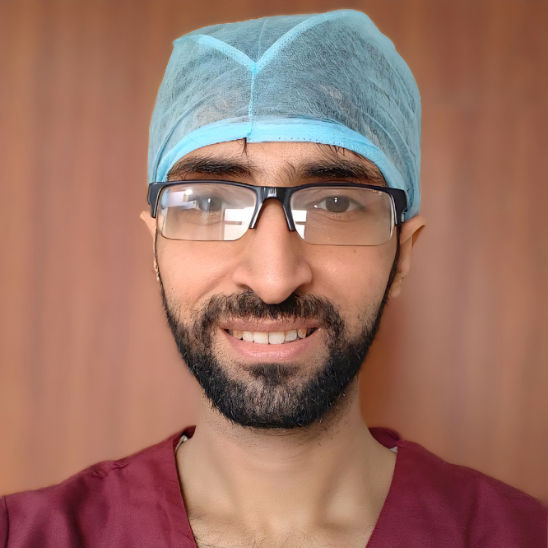Ischaemic Heart Disease Treatment Options, Risk Factors, and More
Discover comprehensive insights into ischaemic heart disease, including treatment options, risk factors, symptoms, diagnosis, and prevention strategies. Empower yourself with knowledge to manage heart health effectively.

Written by
Last updated on 3rd Jul, 2025
The blood supply to the heart is impaired when the arteries that supply blood become narrowed or completely blocked—leading to ischemia. This phenomenon can frequently lead to symptoms like chest pain, shortness of breath, and fatigue. If left untreated, ischaemic heart disease can lead to severe complications, including myocardial infarction (heart attack) and congestive heart failure.
A timely diagnosis and suitable management are crucial in order to avert ischaemic complications. Treatment is mainly aimed at improving blood flow and alleviating symptoms so that the risk of a life-threatening event is lowered.
Medical management of ischaemic heart disease frequently includes a combination of medications, lifestyle changes, and, in certain instances, surgical interventions. By understanding ischaemic heart disease, people can potentially combat it better.
Causes and Symptoms
Thickening of blood vessel walls via the development of fatty deposits within them, or 'atherosclerosis', is a primary culprit of ischaemic heart disease. Factors that support atherosclerosis include:
High blood pressure
High ‘bad’ cholesterol levels
Smoking
Poorly managed diabetes
Obesity
Sedentary habits
Genetic makeup and ageing represent other prominent contributors to the risk of ischaemic heart disease.
The typical symptoms of ischaemic heart disease are:
Chest pain or discomfort (angina)
Shortness of breath
Fatigue
Heart palpitations
Dizziness or nausea.
All of these symptoms should be recognised very early so that the patient has a chance to get medical help.
Consult Top Doctors For Ischaemic Heart Disease
Diagnostic Methods
When it comes to diagnostic methods for ischaemic heart disease, both invasive and non-invasive diagnostic tests are available. Some of the more commonly used non-invasive diagnostic tests are:
Electrocardiogram (ECG): Records the heart’s electrical activity to detect irregular rhythms orsigns of reduced blood flow.
Stress Testing: Evaluates heart function under physical exertion or simulated stress to identify potential blockages.
Echocardiogram: This uses ultrasound to create images of the heart and assess its structure and function.
Likewise, some of the invasive procedures include:
Coronary Angiography: Involves injecting a special dye into the coronary arteries, allowing X-rays to highlight areas of narrowing or blockage.
Cardiac Catheterisation: A thin tube is inserted into the coronary arteries to measure blood flow and pressure, offering detailed insights into the severity of the disease.
Medical Treatment Options
Medical treatment for ischaemic heart disease involves the use of various drugs, which include:
Nitrates: Used in the management of chest pain by dilating blood vessels
Statins: They cause the lowering of cholesterol levels to reduce the chances of plaque buildup
Beta-blockers: They reduce the workload of the heart and regulate blood pressure
Antiplatelet Drugs (aspirin): These act to prevent blood clot formation, helping prevent myocardial infarction
While medications work fairly well in curbing the associated symptoms and complications, they also carry a certain level of side effects. For instance, statins can seldom cause muscle pain, whereas beta-blockers can be the reason behind sudden fatigue or dizziness. This further underscores the need for closely monitoring both medications and any adverse reactions, emphasising the importance of consulting a doctor for safe and effective treatment.
Surgical Interventions
Some of the surgical interventions often opted for in the case of ischaemic heart disease include the following.
Angioplasty and Stent Placement
Angioplasty opens closed arteries by the use of a catheter with a small balloon, allowing blood to flow. A stent (a small mesh tube) is often placed in the artery to keep the artery open. This is a minimally invasive procedure aimed at providing relief from symptoms and minimising heart attack risks.
Coronary Artery Bypass Grafting (CABG)
CABG surgery is the rerouting of blood flow around blocked arteries using healthy blood vessels obtained from other parts of the body. CABG is done in cases of severe blockages that cannot be treated with angioplasty. CABG helps improve blood supply to the heart and the quality of life for patients suffering from advanced ischaemic heart disease.
Lifestyle Modifications
A balanced diet and regular exercise are essential for managing ischaemic heart disease and preventing its progression. Some of the factors you must keep in mind to practice a heart-healthy lifestyle include:
Adding fruits, vegetables, whole grains, lean proteins, and healthy fats to your diet
Limiting saturated fats, salt, and sugar
Regular physical activity, such as 30 minutes of moderate exercise most days of the week
Controlling weight
Managing cholesterol and blood pressure levels
Together, these habits significantly enhance heart health.
In addition to this, quitting smoking and alcohol consumption can immediately reduce the risk of complications, supporting better heart health.
Risk Factor Management
The best way to manage ischaemic heart disease risk factors is by keeping blood pressure and cholesterol levels in check to prevent further damage to the coronary arteries. Lifestyle changes, combined with medications such as statins and antihypertensives, help keep these factors under control. Meanwhile, regular monitoring ensures timely adjustments in treatment to maintain optimal levels.
It is important to keep in mind that diabetes significantly increases the risk of ischaemic heart disease. Therefore, maintaining blood sugar levels through a combination of diet, exercise, and medication is essential. Additionally, addressing other comorbidities like obesity or kidney disease also helps reduce overall cardiovascular risk and improve outcomes.
Rehabilitation and Recovery
Patients usually attend cardiac rehabilitation after they have undergone an attack, surgery, or any other heart problem to help them get back on their feet. Combine supervised exercise with heart health awareness education and emotional healing to make the patients fit, symptomatic, and less prone to complications.
Recovery from ischaemic heart disease continues long after the treatment has been initiated. Follow up with health care providers regularly to monitor progress, assess potential changes in medications, and understand if any new concerns are there. By incorporating a healthy lifestyle and adherence to medications, individuals can attain better health status in the long run.
Advances in Treatment
The treatment for ischaemic heart disease never stops improving. Research is constantly focused on developing innovative treatments for the improvement of ischaemic heart disease. New clinical trials have focused on drugs such as PCSK9 inhibitors, which target and reduce LDL cholesterol levels through a novel mechanism of action.
Advances in ischaemic heart disease treatment offer promising outcomes with fewer complications, providing hope for patients. From regenerative therapy to advanced imaging, advanced ischaemic heart disease treatment is paving the way for early diagnoses, targeting timely interventions and, as a result, better outcomes.
Conclusion
Effective management of ischaemic heart disease requires a combination of lifestyle modification, appropriate management of risk factors, medications, and surgical intervention. By taking part in rehabilitation and long-term follow-up, the chances of improvement and reduction in the occurrence of complications are amplified.
Early recognition and treatment are critical in preventing severe outcomes. Therefore, addressing risk factors proactively and promptly seeking medical intervention can help individuals take control of their health.
Consult Top Cardiologist
Consult Top Doctors For Ischaemic Heart Disease

Dr. Amit. A. Bharadiya
Cardiologist
12 Years • MBBS, MD General Medicine, DNB Cardiology, FSCAI
Maharashtra
Surabhi Hospital, Maharashtra, Maharashtra

Dr. Mangesh Danej
Cardiologist
8 Years • MBBS, MD (General Medicine), DNB (Cardiology)
Pune
Dr Danej clinic, Pune
(375+ Patients)
Dr. Dixit Garg
Cardiologist
10 Years • MBBS , DNB (General medicine) , DNB (cardiology)
Gurugram
Smiles & Hearts, Gurugram

Dr. Pinaki Nath
Cardiologist
8 Years • MBBS, MD General Medicine, DM Cardiology
Barasat
Diab-Eat-Ease, Barasat
Dr. Sibashankar Kar
Cardiologist
10 Years • MBBS, DNB
Bhubaneswar
Hi-Tech Medical College & Hospital, Bhubaneswar
Consult Top Cardiologist

Dr. Amit. A. Bharadiya
Cardiologist
12 Years • MBBS, MD General Medicine, DNB Cardiology, FSCAI
Maharashtra
Surabhi Hospital, Maharashtra, Maharashtra

Dr. Mangesh Danej
Cardiologist
8 Years • MBBS, MD (General Medicine), DNB (Cardiology)
Pune
Dr Danej clinic, Pune
(375+ Patients)
Dr. Dixit Garg
Cardiologist
10 Years • MBBS , DNB (General medicine) , DNB (cardiology)
Gurugram
Smiles & Hearts, Gurugram

Dr. Pinaki Nath
Cardiologist
8 Years • MBBS, MD General Medicine, DM Cardiology
Barasat
Diab-Eat-Ease, Barasat
Dr. Sibashankar Kar
Cardiologist
10 Years • MBBS, DNB
Bhubaneswar
Hi-Tech Medical College & Hospital, Bhubaneswar

